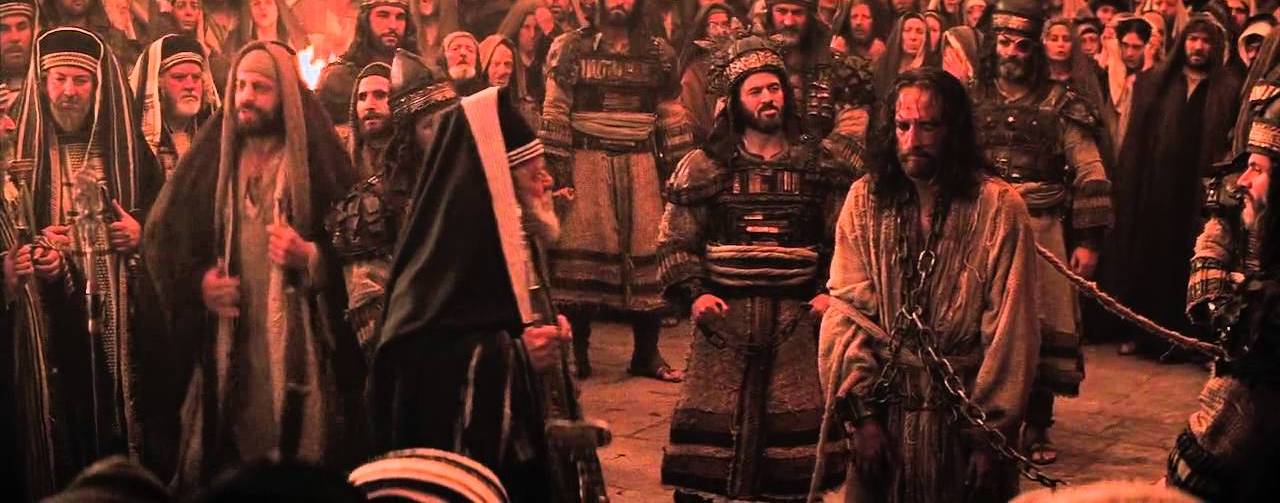

Translated from the French of MM. Lémann
By Julius Magath
Of the North Georgia Conference, Professor of Emory College,
Author of The French Verb Simplified Eighth Edition, Oxford, Georgia|
The manuscript, a photocopy of 1911 edition, was provided through the courtesy of Tom Hess, Manager of Pilgrim Radio, Carson City, Nevada. His daily radio program, “Readers’ Choice,” is an engaging reading of good books, cover-to-cover. This gentleman’s labor of love has been an inspiration to thousands of Christians in the Inter-Mountain West on the Pilgrim Radio Network. This book was retyped by Cheryl Nichols, Suzanne Kieler, Shirley Nickels, and Richard Nickels, during 2002-2003. |
|
Among the ancient assemblies that the public still holds responsible for the conduct of their affairs, there is one upon which rests a responsibility of a highly exceptional character. It is that one which held its sway during the latter days of Jewish national history, and by which Jesus was condemned to death. This assembly is known in history under the name of Sanhedrim. To pronounce this name before Israelites is to recall to their minds the most learned, the most equitable, and the most honorable assembly that ever existed. Woe unto that Jew who would dare, in the presence of his brethren, to attach the least blame to the men or the acts of that high tribunal. He would indeed be esteemed less guilty if he spoke against the Ark of the Covenant itself. Do the Israelites really know what this assembly was? We dare affirm that they do not. Every Jewish child is taught to respect the memory of every individual composing that body, but who they were and what they did, they ignore. This culpable ignorance is designedly imposed upon the people by the rabbins, who, according to St. Paul, “hold the truth in unrighteousness,” Romans 1:18. We shall endeavor, by the help of God, to tear the veil asunder, that our Hebrew brethren may at last know the truth. We have consulted Jewish documents of the highest importance and the most unquestionable authenticity, and we shall make use of them to show how the dignity of this high tribunal was abused by the immoral and unjust character of the men composing it. In order to form a correct estimate of an assembly, we must know, in the first place, who and what are the persons composing it; and in the next place, it is necessary to examine its purposes and methods. In forming an opinion of the supreme Jewish court contemporary with Jesus, we shall first try to find out the personal character of the individuals belonging to it. Second, we shall examine, in the face of the legislative enactments of the Jews, its proceedings against Christ. This work, then, naturally divides itself into two parts, the former of which has never yet been undertaken. The difficulty of obtaining Jewish documents and laborious research involved in deciphering them, have always stood in the way of the historian’s efforts in this direction, and so our estimate of the whole assembly has been based, for the most part, on the knowledge obtained from the Bible of its two principle members — Ananias and Caiaphas. The second part of this work was attempted about thirty years ago in a pamphlet entitled “Jesus devant Caiaphe et Pilate.” This work is from the pen of the Hon. M. Dupin, late Attorney general of the Supreme Court of France, and was undertaken for the purpose of refuting the arguments of Salvador, the Israelite, in his defense of the Sanhedrim in the judgment and condemnation of Christ. This essay, although scientific and clear, has not exhausted the subject. M. Dupin has not only not investigated the individual character of the members of the Sanhedrim, but he has reviewed the trial in such a hasty manner as to touch only upon its principal points, to the utter neglect of those of secondary importance. In this work one recognizes the Attorney General of a supreme court in whose eyes the least irregularity committed in a trial would be sufficient to invalidate the verdict. We, however, as sons of Israel, shall examine it step by step. Having studied the subject of Jewish legislation from its own sources, we shall inquire minutely into the legality of the proceedings against Christ, as conducted by the Sanhedrim Council. M. Dupin confounds the responsibilities of the chiefs of the synagogue with those of the whole nation. These were by no means equal. In this work we shall especially single out the members of the Sanhedrim, and say: “Behold the guilty! These are the men who have led the whole Jewish nation astray.” |
|
|||||||||||||||||||||||||||||||